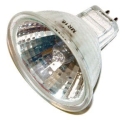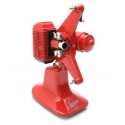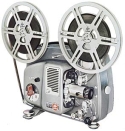16mm film represented the first real alternative to the standard 35mm film that was used in the production of major motion pictures. 35mm film had a number of serious difficulties attendant with its use. First, it was incredibly bulky, and using it with a portable camera was nearly impossible. Second, it was very expensive, as the sheer amount of material that went into a film was over four times as much as in a 16mm frame. Finally, as you may have seen in the movie “Inglourious Basterds”, it was incredibly flammable, being over ten times more flammable than paper.
Early Uses of 16mm Film
The first real use for 16mm film was in news production. News requires portable cameras that can be easily be moved from place to place, and the advent of 16mm film opened up an entirely new era in photojournalism. There is a very good reason why there is so much more footage of the Second World War than the First: the movie cameras were simply easier to move around form place to place. In fact, most news footage was shot on 16mm up until the advent of video almost fifty years later.
A second important use for 16mm film was in television production. Television signals simply did not have sufficient resolution to take advantage of the high contrast in 35mm film, so televisions used 16mm film almost exclusively. In fact, 16mm film stock is still used today for many television shows, though digital film is starting to take over in many studios.
Finally, 16mm film was the first real home movie format. Though it was significantly more expensive than its descendant, Super 8, would be, 16mm film was compact enough that people were able to purchase their own cameras. In fact, because 16mm provides a suface four-times larger than that of Super 8, the home movies produced using 16mm looked mor professional than later home movies (you’ll notice this, if you even visit a museum about the history of film; home movies somehow got worse between 1940 and 1980. The advent of 8mm film is the reason why).
Type of 16mm Film
Like 8mm film, 16mm film has a number of different formats. Unlike 8mm, however, there are far more than two types:
Vintage Movie Prints: The oldest forms of 16mm film are not in use any more. These films were originally black-and-white and, for the first decade or so, did not have any sound. In addition, because the film was not as sturdy, the possible image quality was not as high as it is for later film.
Single- Versus Double-Perforation: The earliest 16mm film was all double-perforated, meaning that it had space for sprockets on both sides of the film stock. This provided a “back-up”, so to speak, in case something went wrong with one of the perforations. However, film stock is stronger now that it was, so this redundancy is no longer as necessary.
Super 16mm: Standard 16mm film has the same ratio as a television screen, not the wide-screen format of the standard motion picture. Of course, since many independent film makers use 16mm film for reasons of cost, this is a problem. As a result, Super 16mm film was created. This is a single-perforated format that uses the extra space to expand the ration to 1.66:1, the standard wide-screen film width.
16mm Film Transfer: While not exactly a format in itself, it is now increasingly common to transfer your 16mm film to a digital format for ease of use. In addition, 16mm films can be blown up to 35mm with only a small amount of loss of quality.
16mm Film Accessories
A number of important accessories can be purchased that go with 16mm film:
- Movie Projectors: A number of defferent film projectors are available. On the one hand, there are vintage film projectors. These film projectors can usually only play original formats of film, and won’t be able to show, for example, Super 16mm film. There are also modern projectors, most of which are much better at properly loading your film leader rolls.
- Movie Projector Screens: 16mm film projectors will work with any film projector screen, though you will want to ensure that you have a screen that can show the aspect ratio that you have purchased.
- Film Splicing Tape: Film splicing tape can be used for editing your 16mm film. After using your negative to create a print in a film processing lab, you can simply splice out scenes that you do not want, and splice the film back together to create neat cuts from scene to scene.
- Miscellany: Accessories can also include such things as full color labels for identifying films, film camera lenses, canisters for holding film, reels for catching finished films and so forth. Whether your interest is creating films with your own lighting studio equipment or simply watching vintage films as a collector, there are a wide range of accessories available.
Conclusion
16mm film provides the midway point between professional 35mm and amateur 8mm film. It is a low-cost film that provides professional quality for independent film makers and allows anyone to have access to high quality film stock.



